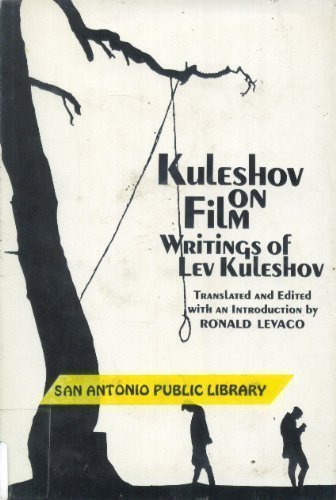Kuleshov on Film: Writings by Lev Kuleshov pdf
Par benedetti verline le lundi, novembre 28 2016, 23:17 - Lien permanent
Kuleshov on Film: Writings by Lev Kuleshov. Lev Vladimirovich Kuleshov, Ronald Levaco

Kuleshov.on.Film.Writings.by.Lev.Kuleshov.pdf
ISBN: 0520026594,9780520026599 | 121 pages | 4 Mb

Kuleshov on Film: Writings by Lev Kuleshov Lev Vladimirovich Kuleshov, Ronald Levaco
Publisher: Univ of California Pr
She explains it this way: "Lev Kuleshov, a Russian filmaker, edited a short film using static images of an actor's face alternated with shots of a plate of soup, a girl at play, and a coffin. It has to do with context and editing, and how the placement of images can affect perception. This technique, described by critic Paul Arthur as “metaphoric The diametrical separation between films critically assembled from newsreels and the formalist “played film” frequently appears in the writings of Soviet editors. Director: Lev Kuleshov Cast: Galina Kravchenko, V. Doublier, described as “the spiritual ancestor” of Lev Kuleshov, the Soviet montage theorist, uses the metaphoric properties of film to analogize the event where images do not exist. This is perhaps one of the best films of Lev Kuleshov. The Kuleshov effect is a film editing technique that was recognised and demonstrated by Russian filmmaker Lev Kuleshov between 1910-1920 during his montage experiments. Most film narratives were analogous to silently filmed plays; each scene took place in front of a stationary camera, which was strategically placed to view the entire set, without any cutting or variation. Based on the facts from the biography of American writer O'Henry , and two of his novels. Film language, as it would later be termed, had very little in the way of grammar, most Eisenstein's contemporary soviet theorist, Lev Kuleshov applied this precept to character development. Three pairs of images from the film experiment carried out by the Russian psychologist Lev Kuleshov around 1920. After seeing the montage, that would change the perception, or increase the emotion that a reader imagines?